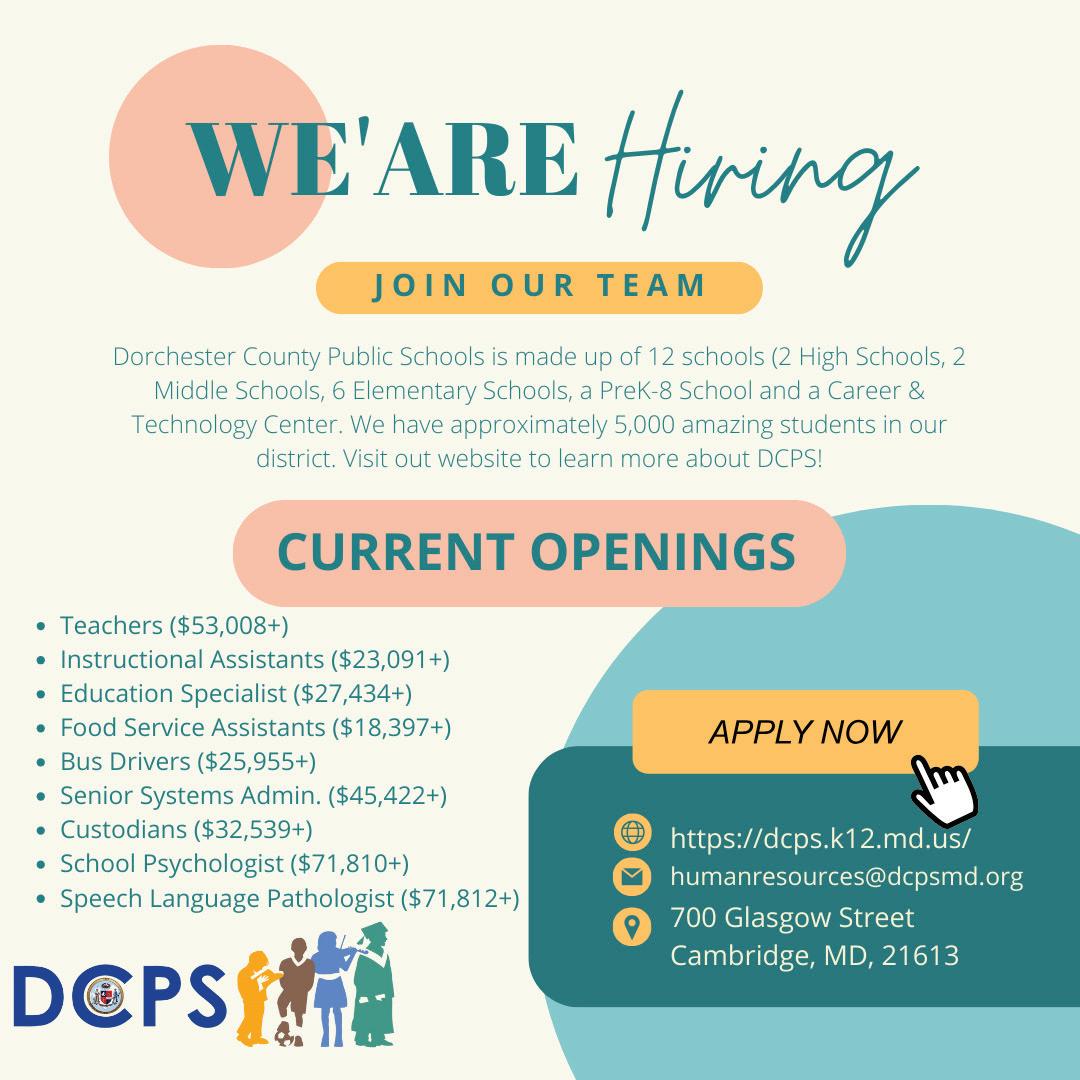FALL









Managers by definition have to be leaders, so you’ll have to showcase those qualities well before applying for a promotion.
Begin redefining yourself in the office by helping others succeed.
Every workplace comes with its own challenges. What separates staff and management is often the ability to see past these issues toward a solution, rather than simply complaining about them. Pro-motions typically follow for consistent problem solvers, so go a step further when identifying a complication or setback. Quality control is a typical issue, along with breakdowns in communication and technical mishaps. Outside competition may also present an unexpected challenge. Thinking outside the box when tackling these everyday problems will showcase your leadership potential – and your team will grow closer as they overcome chronic stumbling blocks. The next time a management position comes open, you’ll be seen as a natural fit.
The ability to communicate effectively is also critical to good management. Leaders must be able to convey their goals, while also creating a sense of teamwork through shared sacrifice. Begin open dialogues with coworkers, and help out with their projects – even if the scope isn’t without your own job description. Learn more about the challenges faced by those around you. Effective leaders are also great sounding boards. These positive relationships might potentially lead to new solutions, but they also show
your ability to work collaboratively, to be a trusted partner, and to under-stand the bigger picture. Even if you don’t immediately earn a promotion, you’ll be becoming a better coworker and team member.
Beyond problem-solving and communicating, leaders must be aspirational. They convince others around them to try harder and to think harder every single workday. Inhabiting that role
starts by pushing yourself in the same way. Continue professional development, no matter how long you’ve been part of the same industry or company. This might mean learning more about related occupations in your office, or specific training in motivating others, performance evaluation or general leadership. These are key to succeeding at the next level. Many companies offer this coursework, but if not, seek our training opportunities through area community colleges and universities, online or at the library.



If your search bogs down, turn to these best practices
Job seeking can be a stressful, exhausting process. You may be dealing with stress over financial pressures, not to mention anxiety about starting over with a new employer. Bad habits can take hold along the way. That’s why it’s important to develop and follow best practices to stay on track.
There’s a sense of camaraderie to be found with other job seekers, so widen your circle to include them. They may also be aware of open positions that you haven’t yet noticed. Create a shared community, whether online or in person, where you can discuss new job openings. You can also take advantage of this space to discuss personal challenges and opportunities. Time spent between jobs is far less stressful when there’s a sense that you aren’t alone. You’ll be there to share potential employment leads, but also critical advice or even a shoulder to lean on. You could become one of the first to apply after receiving a hot tip, and perhaps a friend for life long after you’ve moved on to your next job opportunity.
Your employment has ended, but your resume doesn’t have to remain static. Continue updating your application materials to focus on requirements for each individual employment option.
These customizations will help your cover letter, resume and LinkedIn accounts stand out among other applicants by highlighting the special educational and professional achievements that a hiring man-ager is looking for. Many companies employ software that searches for keywords, making constant updating even more critical. At the same time, you can continue professional development projects – and include them on your resume. This shows that you’ve remained engaged with your field, even between jobs.
If you feel like you’ve reached a professional dead end, reach out to career counselors, professional resume writers and leaders with industry groups. They can help you tailor your search toward new challenges to spark new career momentum. Discuss your journey with friends, family and other professional contacts. Being open and honest will help them better understand how to help you to your next success story. Former coworkers and industry leaders have likely been in the same position at one time or another. They may also know about new roles that would suit you perfectly.

A polished online presence is critically important for job seekers.
You wouldn’t leave home without double-checking everything in the mirror. The same goes for reassessing a personal brand before returning to the job market. The only difference is you’re making sure to showcase professional accomplishments and unique skills rather than adjusting your tie or favorite accessory. Here’s how to polish up your online presence.
In the modern era, first impressions are often guided by social media and that’s especially true with prospective employees. Expect hiring managers to check in on your Facebook, Instagram and Twitter accounts to get a better idea of how you present yourself. Courting controversy may not fit with their company culture, so it’s smart to delete things like offensive memes and inappropriate photos.
Update professional sites like LinkedIn with your latest accomplishments, both professionally and in the community. In some cases, it may make sense to highlight specific elements of your work past in order to better position yourself for a new job opportunity. To strengthen your knowledge and contact list, try touching base with one new professional
source each day, either by phone call, text or social media. Follow and contribute to related industry pages, and create your own original content focusing on your occupation. These discussions will make it clear that you are an engaged worker with a forward-thinking approach.
Working on your brand also includes things you can’t control, such as search results on the inter-net. It’s a good idea to look around and see what’s out there. A comprehensive search will give you a better idea of what hiring managers will see, including details about previous jobs and even parts of your private life. With that knowledge, you can then better prepare for any questions that may arise through the interview process.

Some of the best brand conversations are held internally. Consider crafting a mission statement to better frame your career goals. Sketching out where you’d like to be next year, in five years and 10 years will put everything in perspective today. Your plans will be more concrete, your social-media interactions will be more focused, and your conversations with prospective employers will be more detailed and complete. This missiontatement will eventually become a kind of road map for success.
These jobs are always in demand, profitable and very rewarding.
Not every career requires a degree from a four-year university. In fact, some of the most varied and sought-after positions are skilled trades learned through technical schools and apprenticeships. You can build a great career with no student debt.
About 30 million jobs in the United States that pay an average of $55,000 per year don’t require bachelor’s degrees, according to the Georgetown Center on Education and the Workforce. CEW also reports that a higher level of education doesn’t necessarily translate into a higher salary. In Texas, for example, workers with associate degrees in chemical technology had median earnings of $75,500 in 2020, compared to $50,600 in median earnings for bachelor’s degree holders in the state.
Training for some of these in-demand roles can begin in high school, where the basics of woodworking or auto repair might be taught. Apprenticeships are available upon graduation. Others may attend a trade
school or technical college for more advanced lessons.
Many veterans leave the service with transferable skills that allow them to directly enter the workforce. They may also take advantage of veteran benefits that provide additional training or teach adaptive skills to transition into the civilian workforce. Those who are willing to work with their hands and complete this training, serve apprenticeships and earn certification emerge with a sturdy career that provides services that are always needed. Most also have substantial pay rates, sometimes into six figures. Key areas of need include electricians, plumbers and construction technology
To earn a license, plumbing technicians must attend a year of training at a technical school and then begin an apprenticeship. They’ll learn about more than pipes and drains. Modern plumbing includes cool tech like tankless water heaters, smart appliances and WiFipowered leak detection systems. You’ll exit training with a job that is always in demand.
As with plumbing, construction jobs are now defined by huge advancements in computerization. In keeping, one of the fastest-growing trades is the relatively new field of construction technology. These workers are versed in all of the latest smartenabled systems, with skills ranging from installation to troubleshooting and repairs. With a focus on everything within the digital footprint of modern spaces, workers in this field needed additional training. It will take two to three years before technologists earn certification, followed by a paid apprenticeship.
Anyone with an interest in this field and a high-school degree or equivalent can begin technical school training to become an electrician. You’ll receive training in the fundamentals of this field, from traditional wiring to programmable systems used in residential, industrial and commercial settings. Two years of school is typically required, followed by an apprenticeship before electricians earn the required licensing


Apply online from an yloca tion with internet access:
recruiting for full-time, part-time, hourly,& seasonal jobs

Crea te an account, check the sta tus of your applica tion, get notified when new jobs become available
Please contact the Department of Human resources with anyquestions regarding job postings at smchr@stmar yscountymd.gov or at 301-475-4200 ex. 1100.
ACCESSIBILITY NOTICE: If you need areasonable accommodation for anypart of the emplo yment process due to aphysical or mental disability contact the number listed above.
*including Mar yland Sta te Pension
*St. Mar y’sCounty Government only accepts online job applica tions. Computer access is available at all St. Mar y’sCounty Public Librar ybranches.














































Let your body language sing your praises during interviews
Body language during an interview — whether the interview is conducted in person or online — will either hurt or help you. Even if the hiring manager doesn’t consciously think about it, they’ll form an impression based on the way you hold your body and your non-verbal signals.
Practice! Ask your friends to conduct mock interviews with you and observe your body language and how you carry yourself. Be more aware of your body language when you are socializing or hanging out with friends. Use it as an opportunity to improve your body language.
This starts from the moment you arrive at the company’s property or wherever the interview is being held. Don’t assume that you won’t be seen in the parking lot or in the lobby. Stand tall with your shoulders back. Move with confidence— don’t rush and don’t stumble.
Start your interview with a smile and a warm greeting. During the interview, smile whenever appropriate.
S urprisingly, the way you sit during

an interview says a lot about you. Indeed’s Career Guide says that the way you sit can communicate such things as personality, confidence, mood, honesty, reaction to questions, enthusiasm for the job, motivation, anxiety level, attentiveness and comfort level.
Wait until you are invited to sit and then sit at the back of the chair. This will help you sit up straight and communicates confidence. If you are given a choice of chairs, choose the one with a straight back.
Keep both feet on the ground. Crossing your legs can come across as defensive and crossing your ankle over a knee can seem overly casual. Keep your feet and legs still during the interview.
Lean forward slightly whenever your interviewer is talking to show that you are interested. Avoid looking down unless you are writing notes or referencing your resume. Tilt your head occasionally to show you are paying attention and to come across as friendly.
Nod as appropriate to show you are paying attention and are interested in what the interviewer is saying.
Connect with the person conducting the interview. Eye contact is important for this, but you don’t want to be so intense that it comes across as creepy. When the interviewer is speaking, maintain eye contact. When you are speaking, maintain eye contact for several seconds, look away and then
make eye contact again. You can look at their chin or between their eyes. If you are in a group interview, first make eye contact with the person who asked the question and then look briefly at each of the other interviewers.
Watch out for nervous habits that distract from what you are saying or communicate anxiety. Let your hands rest on the table, armrests or in your lap. Don’t touch your face or hair or cross your arms. It is OK to gesture if you do it naturally and in moderation. Keep yourself from fidgeting, tapping your feet or fingers, biting your nails, cracking your knuckles or twirling your hair.


Gaining a comprehensive understanding of what companies are looking for, what their larger goals are, and the work you’d be doing can provide important momentum for your candidacy. With this information in hand, you can tailor your aapplication – and your interview answers – to perfectly meet their expectations.
There are a number of routine actions which should always precede applying for another job: You should update your resume with your latest achievements and projects, and tidy up all social media accounts including professional sites such as LinkedIn. But don’t forget to do your homework before sending
over the application materials or accepting an invitation to interview.
Updating your professional materials and continuing to nurture key relationships is always important, because you never know when the next job opportunity might come along. The same goes for familiarizing yourself with industry standards, differing competitor goals and innovations, and possible job opportunities – even when you’re not actively looking. This will give you a head start, should a position come open.
Only 30% of the global workforce is actively looking for a new job at any given time, according to LinkedIn.
Yet plenty of people outside of the smaller demographic end up leaving for new companies anyway. It pays to be ready.
Another way to get ahead among any pool of candidates is through a direct
internal referral. Employers trust them because they already have a deep respect for people who are part of their corporate structure. That trust is well earned: LinkedIn reported that more than 30% of those who offered referrals did so in order to bolster the company, while only 6% did so for recognition. If you don’t already have a direct connection, work on your networking.
Develop a daily routine around continuing professional development, social media, job fairs, trade groups, and related work on charity or boards of directors.
You never know when you might make the right contact for a critical referral down the road.
Employers usually start by posting to online job boards, so make a habit of checking them. Professional social networks also play an increasingly important role. Make sure you’re present in the professional community, so you’ll remain top of mind. Attend conferences, volunteer at industry events, and be a part of other related social activities.

There used to be an office axiom: “Dress for the job you want, not the one you’ve got.”
There used to be an office axiom: “Dress for the job you want, not the one you’ve got.” Following that simple advice has gotten a lot more confusing in the age of casual dress. The concept started as a way to ease into the weekends. But soon, “Casual Friday” had turned into a week-long approach. The pandemic solidified things: The days of formal attire at work are over.
But how does that apply to the interview process? You’ve got to walk a very fine line, since arriving with an outfit that’s too casual might indicate a lack of seriousness. It’s easy enough for the self-employed, gig economy workers and freelancers. But you’re going to be expected to fit into their office culture. Here’s how to manage a tricky situation.
As with so many other parts of the application process, the best approach is to learn as much as you can about your prospective employer. Talk to staff members, check social media and their websites for clues on the typical manner of dress at their offices. Mimic their formality, or their casual approach, when you arrive for the interview and
you’ve eliminated a possible stumbling block for your candidacy. You’ve also shown the hiring manager that you’re prepared and engaged.
Some companies have posted dress codes, which can provide detailed information about what is allowed – and, more critically, what is not allowed. Don’t be afraid to slightly exceed those standards, since your interview wardrobe provides its own first impression. If jeans are allowed, make sure yours are new, clean and unwrinkled. If
Even if you get your hands on a corporate dress code, you may find that they are filled with confusing jargon. Here are a few rules of thumb: “Casual dress” means casual slacks with collared shirts or dresses, or perhaps nice jeans. Choose casual but not sporty footwear. “Business casual” means adding a sportscoat or shifting to a more structured dress. “Business professional” sounds like what it is, a classic, more formal approach. Add a distinctive broad, scarf or tie to bring some of your own personality into the look – or even some offbeat socks.

With such a robust number of job openings, it’s easy to have a wandering eye. Perhaps the grass is greener on the other side. But changing jobs is about more than the prospect of new challenges and perhaps more money in your pocket. There are specific things to consider before making such a big decision. Once you’ve properly evaluated them, then you’re truly ready to enter the job market:
Even with the Great Resignation fading and layoffs happening in some sectors, there is still an abundance of opportunity in the job market. People are also moving from job to job at unprecedented rates, considering how employees used to remain with one employer for most if not all of their careers. Still, there are things to consider: Is the time right for you? That’s the most natural place to begin, even if opportunities are rapidly expanding elsewhere. It’s also important not to let a bad day or two push you back into the job market, because things can and do turn around – and getting a new job is never easy, no matter the country’s economic shape.
So, you’ve resolved to quit. The conventional wisdom has always been to keep your job until you get a new one, no matter how unhappy you are. But a Joblist survey found in some specific cases, an impressive number of employees would leave anyway. In fact, as many as 35% departed before securing a new position if they faced a toxic work environment, deepseated issues with management or an office culture that didn’t reflect their values. Those same issues account for nearly half of all resignations, according to Joblist.
If you’ve become dissatisfied with your job advancement, encountered new or declining management, or simply grown restless in your current role, it might be time to update your résumé.
You won’t be alone: The Joblist survey found that nearly half of all employees admit to thoughts of quitting. Most mention a desire for a higher salary, but more and more employees are focused on work environment.
Whatever the situation, those who finally left did so over a roughly two-month period from first considering a new job and tendering their resignation.

Try something new instead of fading away into retirement
Older workers are increasingly jumpstarting their careers again late in life, as millions confirmed their participation in a second job for a MetLife Foundation survey. For some, this might mean parttime work that supplements Medicare or retirement income. For others, these are full-time jobs with a local company or nonprofit. Some are even starting their own businesses.
There’s a sense of personal fulfillment in continuing to make important contributions, and earning a paycheck may help make ends meet. Whatever your goals, this new trend has re-written the rules on how the golden years unfold.
Retirement has typically been portrayed as a life of luxury, with mornings filled with tennis or golf, long afternoons with friends and evenings spent in rocking chair moments. The financial reality for many, however, is quite different. Some older workers simply can’t afford to quit their jobs — in particular those who aren’t comfortable with their level of retirement savings or investments. The days of traditional pensions are long gone for the vast majority.

In other cases, retirement-age employees may feel that they have more to offer, in particular those with knowledge and experience that can be of help to others. That’s led them toward new employment opportunities. More than a quarter of older workers are interested in creating a startup or new nonprofit, according to the MetLife Foundation survey.
Job participation has been down for years now, beginning during the advent of the pandemic. Some workplaces remain badly understaffed. These businesses are increasingly in need of dependable, knowledgeable workers. That makes starting a second career easier than ever. Just remember to tailor your candidacy to highlight your particular area of expertise. There will always be younger — and thus, cheaper — workforce options, but they won’t have the years of experience you do. At the same time, you don’t have to continue forward in the same role — or even the same industry. Don’t be afraid to branch out. If you’ve always had an interest in a particular field, but want to brush up on the latest trends and techniques, consider enrolling in a training program through local universities or community colleges. You might end up in an entirely new second career that highlights skills your old bosses never knew you had.
